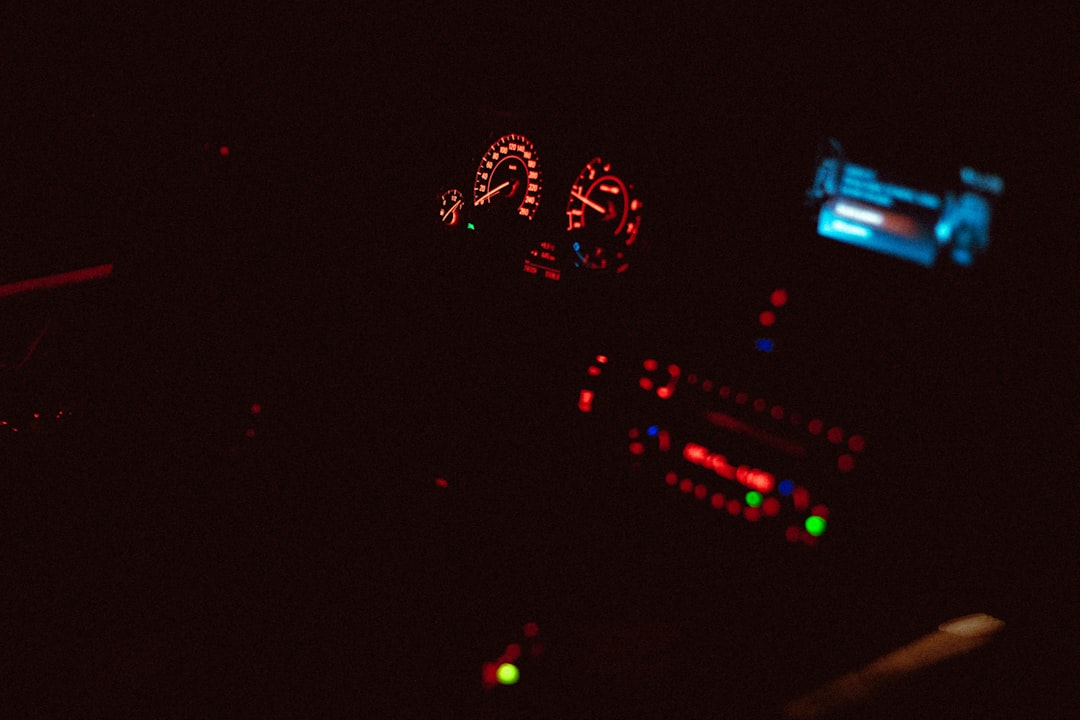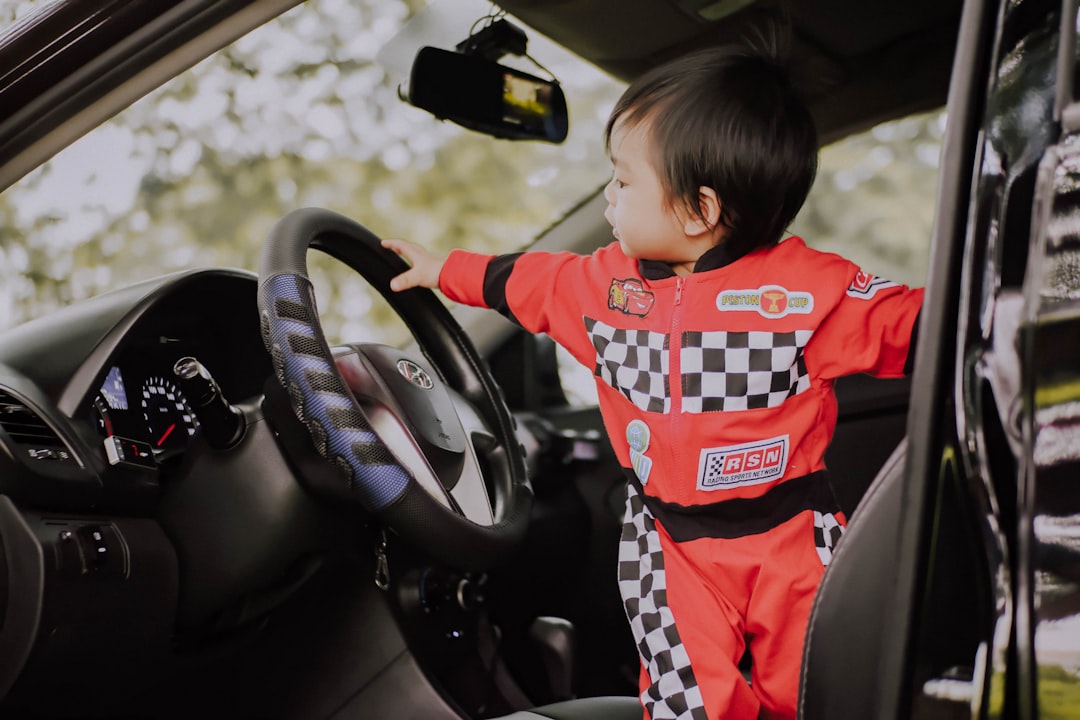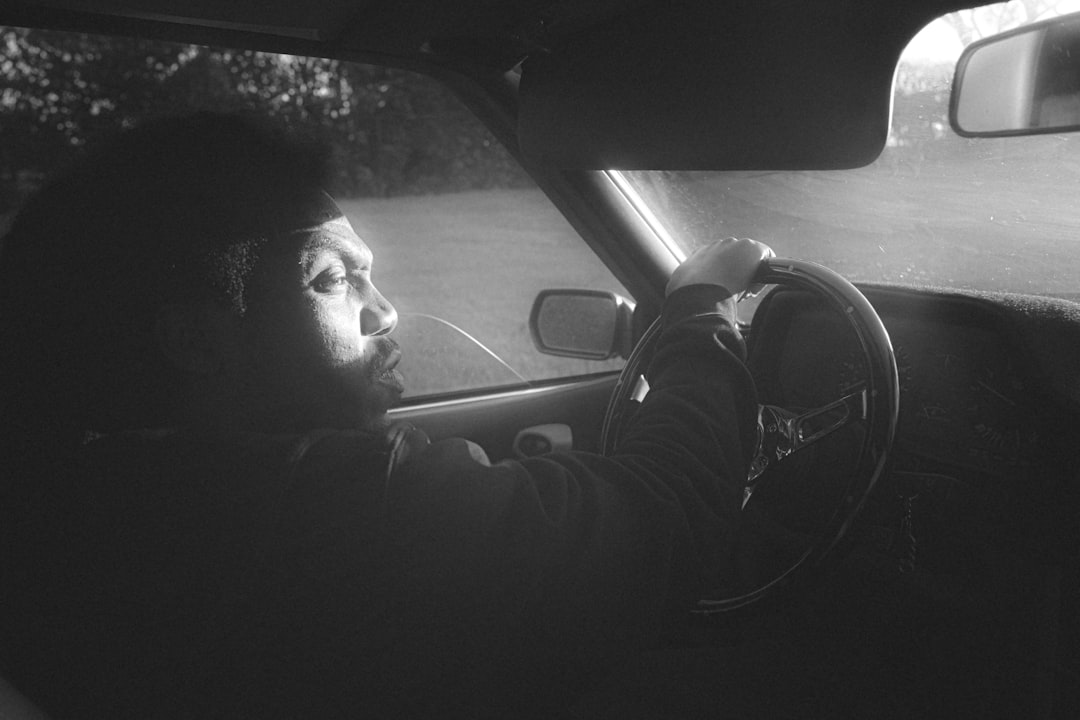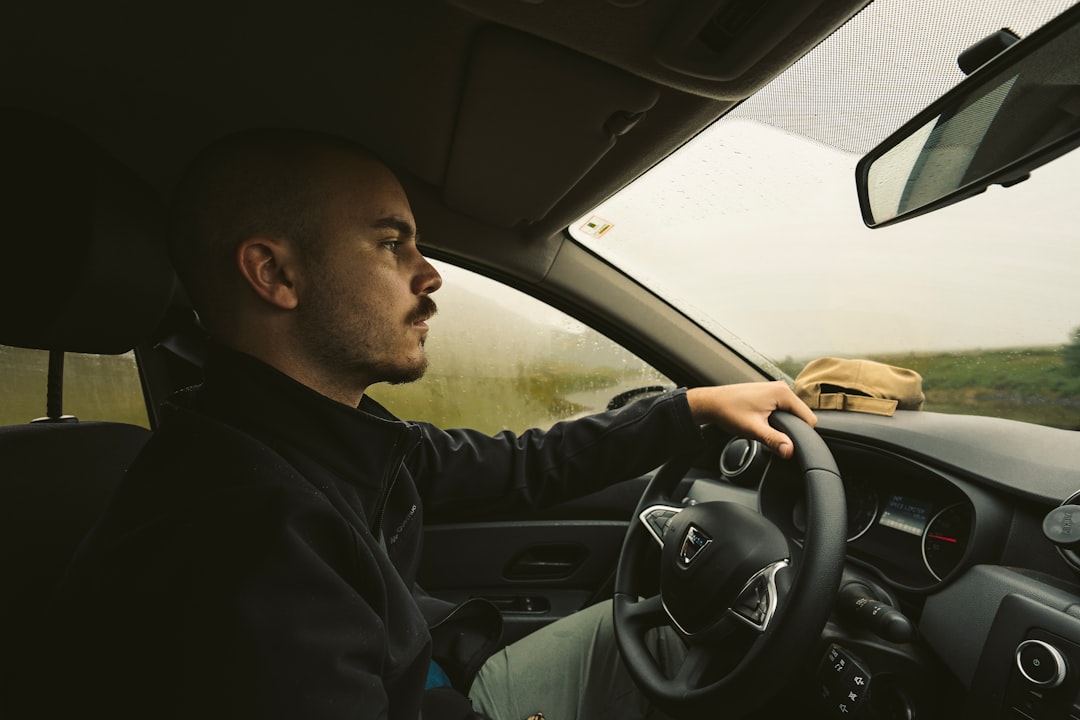

Engage prospects with a scan and streamline customer engagement with FREE QR code marketing tools by Sona – no strings attached!
Create a Free QR CodeFree consultation

No commitment

Engage prospects with a scan and streamline customer engagement with FREE QR code marketing tools by Sona – no strings attached!
Create a Free QR CodeFree consultation

No commitment
Today's driving schools compete in a market shaped by digital channels, influencing how prospective students discover, engage with, and choose providers. Static brochures, printed ads, and outdated sign-up processes fall short of modern expectations for speed and convenience, resulting in missed high-value prospects when traditional forms fail to capture interest. Parents, teens, and adult learners expect instant access to information, transparent pricing, and a quick path to booking. Every extra step between interest and action raises the risk that a competitor will capture the lead first.
QR codes are transforming physical surfaces into digital gateways, bridging the gap between offline and online engagement. These codes can be placed on local flyers, instructor business cards, class handouts, or vehicle wraps, offering a seamless way for prospects to access digital forms, course content, or review pages. Such technology provides valuable analytics on which assets are working, as covered in the Sona QR’s product overview helping driving schools overcome the perennial pain point of untracked traffic and unclear marketing attribution. With the right setup, a scan can become an inquiry, a scheduled lesson, or a glowing review in seconds.
Forward-thinking driving school marketers and owners use QR codes to streamline lead capture, personalize follow-up, and create elevated customer experiences. By reducing delays between first engagement and outreach, schools ensure that leads are contacted before competitors step in. The approach works across the buyer journey: awareness, consideration, and conversion. Discover how QR code technology can unlock real growth in driving school marketing, lead generation, and customer relationships, and how platforms like Sona QR and Sona make the process trackable, measurable, and scalable.

QR codes are a powerful bridge between offline materials and digital lead capture for driving schools. Many schools struggle with dropped leads from outdated paper forms, limited tracking, and slow follow-up, causing high-intent prospects to fall through the cracks. Replacing analog processes with QR-enabled experiences converts interest into action while preserving the data you need to optimize campaigns and budgets. For example, switching from paper inquiry sheets to a mobile-first form via google forms QR reduces errors, improves completion rates, and enables immediate automated responses.
A thoughtful QR code strategy can address these pains by tying physical placements to measurable outcomes. When every scan is tagged with the placement, offer, and audience context, you can quickly identify which efforts produce the best scan-to-inquiry and inquiry-to-enrollment rates. With Sona QR, driving schools can automate lead capture, enrich audience data, and funnel each scan into an actionable pipeline, while Sona.com connects those interactions to revenue attribution and downstream performance.
Modern QR solutions let driving schools retire slow, untrackable workflows and move to a digitally integrated system. Prospects get instant access and clarity, staff get better data and automation, and leaders get the attribution needed to scale what works.

Driving school marketing relies on a mix of local and digital outreach but often struggles to funnel offline engagement into measurable online leads. Yard signs, car decals, and community flyers put your brand in front of people at the moment they need you most, yet without a fast path to action those impressions remain untracked. QR codes turn those moments into measurable outcomes and give schools a way to act on intent while it is fresh, as highlighted in this QR code marketing overview.
The value shows up in speed, simplicity, and attribution. A teen sees your training car at a stoplight, scans the vehicle QR code, and books a trial lesson in under two minutes. A parent at a PTA meeting scans a flyer to compare packages. A graduate in the car after a road test scans a poster to leave a review. Each scan delivers data on timing, device, and placement, and each action can be automated to improve conversion rates.
Robust QR platforms bridge the attribution gap and turn fleeting offline interactions into measurable, enrolled students. This applies across common driving school materials like window posters near DMVs, student handbooks, parent information kits, and receipts or invoices that can prompt reviews or referrals.

Driving schools need versatile campaign assets to manage multiple touchpoints and centralized data. Different QR formats serve different goals, from instant booking to frictionless contact sharing. Selecting the right format for each placement reduces friction and increases conversions.
Dynamic QR codes let you change destinations as offerings evolve and allow you to track every scan. Use dynamic codes wherever you need analytics, testing, or the flexibility to update content. Reserve static codes for fixed assets like a permanent PDF of a handbook or a long-term information page that rarely changes.

Driving schools often lack insight into which offline materials actually drive leads. QR codes transform visible, high-traffic assets into measurable digital entry points. By seeding QR codes across common touchpoints, you turn the real world into a performance channel.
Vehicle placements are particularly powerful. Training cars act as moving billboards that live in neighborhoods where your audience resides. A clear call to action like "Scan to book your first lesson" paired with a dynamic QR code captures intent at the moment of recognition. Classroom posters, instructor handouts, and window decals do similar work in environments where decision makers already engage with your brand. Make use of classroom posters to deliver helpful content at the right moment.
These placements turn scans into actionable data on behavior, timing, and location. The result is less wasted spend, more responsive marketing, and a clear sense of which physical channels deserve expansion.

QR codes make campaigns measurable and help attribute enrollments, upsells, and reviews with precision. Consider the highest-impact scenarios that align with your audience’s daily interactions. Each use case should have a clear action and a defined success metric.
Every scan transforms an offline interaction into a digital signal that can be tracked and attributed. Over time, your data will reveal which creative, offer, and placement combinations consistently turn interest into enrollment.
Driving schools face challenges building remarketing audiences from anonymous contacts. QR scans clarify intent and channel data for precise segmentation, allowing you to tailor follow-up based on what someone scanned, where they were, and what action they took next. This moves your strategy from broad messaging to context-aware communication that respects timing and need.
To do this well, deploy unique QR codes across the journey and sync them with your CRM and ad platforms. Audience tags should reflect the campaign’s purpose and the scanner’s likely stage such as awareness browsing versus active scheduling. Sona QR can pass these tags automatically, then Sona.com can stitch them into a complete buyer journey for attribution and optimization.
QR code data enables faster, more effective engagement and reduces missed opportunities. The result is increased show rates, stronger enrollment conversion, and more positive reviews that fuel organic growth.
Marketing for most schools is siloed, making unified tracking tough. QR codes connect every channel and consolidate attribution so you can understand how print, events, and digital work together. By embedding QR codes into every offline asset and linking scans to your CRM, you build a single source of truth for performance.
The key is consistency. Use a unified visual style, clear calls to action, and dynamic codes for all campaigns. This creates familiarity for your audience and reliability for your team, while the analytics layer shows how each channel contributes to pipeline and revenue.
A cohesive QR strategy centralizes measurement, ties spend to results, and powers continuous optimization. With Sona QR, you can manage all codes, monitor performance, and sync scan data with your CRM and ad platforms so nothing falls through the cracks.
Start by defining exactly what you want the scanner to do and why it matters to the business. Align the QR code with a single next step such as booking, requesting pricing, or leaving a review. This clarity improves your creative, call to action, and landing page experience.
For driving schools, a focused goal might be increasing first-lesson bookings, promoting test-day packages, or generating parent referrals after a student passes. If you attend a high school safety night, your use case could be to drive event RSVPs or collect interest in a bundled parent-teen package with an exclusive discount code.
Select between static and dynamic QR codes based on your need for data, flexibility, and testing. Static codes are fine for rarely changing assets. Dynamic codes support faster iteration and provide analytics, which is critical for performance marketing and cohort analysis.
For driving schools focused on growth, dynamic codes are typically best. They allow you to adjust destinations during seasonal promotions, run A/B tests for headlines, and integrate scan data into Sona QR dashboards and your CRM.
Design influences scan rates as much as placement. Use a clear border, strong contrast, and a short, benefit-driven call to action. Incorporate brand elements like colors and logos while maintaining scannability standards such as minimum size and white space, and review ideas from innovative advertising.
Before printing at scale, test across distances, lighting conditions, and device types. Have staff and a small pilot group confirm that scans work quickly and that the landing page loads fast on mobile networks.
Roll out QR codes where your audience already spends time. Match the destination and message to the environment so the next step feels natural. Use different codes for each placement to retain clean data by channel and creative.
For a driving school, prioritize training cars, storefront windows, community boards, and school events. Pair codes with geotargeted ads that retarget scanners who did not complete a booking, creating a surround-sound effect.
Use analytics to connect scans to business outcomes. Measure scan volume, conversion rates, time-to-first-contact, cost per inquiry, and revenue per enrolled student by placement and campaign. Set benchmarks, then iterate.
With Sona QR you can monitor live performance and trigger alerts for follow-up, while Sona.com attributes revenue to initial scans and subsequent touches. This lets you pause underperforming assets and scale the winners confidently.
For many schools, scan volume matters less than the link between scans and revenue. A mature program does more than count interactions. It verifies that QR-driven leads become enrollments and positive reviews, then connects those wins to specific placements, creatives, and offers. This level of clarity is what turns QR codes from a convenience into a performance channel. See Sona’s guide to offline attribution.
By integrating QR scans with CRM, attribution, and revenue event tracking, you move from guesswork to precision. Sona QR captures detailed scan metadata like time, device, and location. Sona.com extends this by linking scans with website sessions, ad clicks, email engagement, and CRM records so you can see multi-touch paths from first scan to enrollment.
Set benchmarks that fit your market and placements. Many driving schools see 15 to 35 percent scan-to-form conversion from high-intent placements, and 20 to 50 percent form-to-enrollment conversion when follow-up occurs within five minutes. Use these as starting points, then localize targets based on your data.
QR adoption accelerates when staff and students understand the value and when experiences feel rewarding. Focus on clarity, speed, and automation so that every scan feels like a shortcut to something useful. Over time, roll your best practices into staff training and onboarding so the approach scales with consistency.
Choose the tips that match your media and goals. Driving schools often rely on vehicles, local print, classrooms, and events, which means design and placement are critical. Incentives for scanning also help, particularly when paired with practice resources or preferred scheduling benefits.
Creative deployment ideas include a "Pass and Review" card that graduates receive after their test with a QR code to leave a review and unlock a referral bonus, and a "Parent Portal" magnet with a QR code that opens a dashboard for lesson schedules, progress reports, and payment options.
Adopting QR code technology gives driving schools a competitive edge. By converting every brochure, car wrap, and classroom poster into a digital entry point, you drive instant action, gather actionable insights, and unify performance measurement. These tools help marketers modernize processes, improve customer journeys, and increase ROI, solving pain points like lost leads, anonymous traffic, slow follow-up, and unclear attribution. Integrated QR campaigns help capture, nurture, and convert more students through seamless engagement.
QR codes are more than a convenience for driving schools. They are a practical strategy for turning physical visibility into digital action and measurable revenue. When paired with dynamic destinations, clean tagging, and fast automation, a simple scan becomes the start of a personalized journey that ends in enrollment and advocacy. Every car, flyer, and classroom asset gains new life as a trackable, optimizable channel.
Here is what this approach delivers for driving schools of any size:
With Sona QR, you can create and manage dynamic codes across every touchpoint, track performance in real time, and automate follow-up. With Sona.com, you connect those scans to full buyer journeys and revenue attribution so you can scale what works and sunset what does not. Start creating QR codes for free.
QR codes have transformed driving schools from traditional outreach methods into dynamic, measurable growth engines. Whether it’s accelerating student enrollment, enhancing learner engagement, or streamlining access to course materials, QR codes replace cumbersome processes with instant, mobile-friendly actions that capture real-time data—turning every flyer, poster, or vehicle decal into a powerful conversion tool. Imagine knowing exactly which promotional efforts bring in the most new students and being able to optimize your campaigns instantly.
With Sona QR, creating dynamic, trackable QR codes is effortless. Update your campaigns on the fly without costly reprints and connect every scan directly to enrollment metrics. This means no missed leads, smarter marketing investments, and a smoother path from interest to sign-up. Start for free with Sona QR today and transform every scan into a new student and every campaign into measurable growth.
The best marketing ideas include using QR codes on vehicle wraps, flyers, business cards, and classroom posters to create seamless digital engagement, offering mobile-friendly booking forms, running targeted local promotions, and integrating multi-channel campaigns with measurable tracking.
Driving schools can use social media by encouraging after-lesson selfies and testimonials linked via QR codes placed on classroom walls and vehicle interiors to drive user-generated content and engagement.
Driving schools can increase online visibility by listing on Google My Business, using QR codes to connect offline assets to online platforms, running localized ad campaigns based on scan data, and maintaining active social media campaigns.
Creative ways include placing QR codes on training cars with clear calls to action, using classroom posters with bonus content, distributing flyers with limited-time offers, and running community event campaigns with unique QR codes for tracking.
QR codes bridge offline and online marketing by turning physical assets into measurable digital entry points that enable instant booking, lead capture, review collection, and provide valuable analytics for optimizing campaigns.
They can improve local marketing by deploying QR codes on vehicle wraps, storefront windows, community flyers, and event materials to capture intent in real time, then using scan data to guide geo-targeted ads and personalized follow-up.
Cost-effective tips include replacing print-only offers with QR-linked mobile forms, using dynamic QR codes to update content without reprinting, automating follow-up messages, and focusing spend on high-performing physical assets identified by scan analytics.
They can create memorable experiences by offering instant access to relevant course info and booking via QR codes, providing personalized follow-up, enabling easy Wi-Fi access in classrooms, and using QR codes for feedback and referral incentives.
Listing on Google My Business increases online visibility, helps local customers find accurate information quickly, supports reputation management through reviews, and complements QR code strategies by enhancing search presence.
Use Sona QR's trackable codes to improve customer acquisition and engagement today.
Create Your FREE Trackable QR Code in SecondsJoin results-focused teams combining Sona Platform automation with advanced Google Ads strategies to scale lead generation

Connect your existing CRM

Free Account Enrichment

No setup fees
No commitment required

Free consultation

Get a custom Google Ads roadmap for your business






Launch campaigns that generate qualified leads in 30 days or less.
